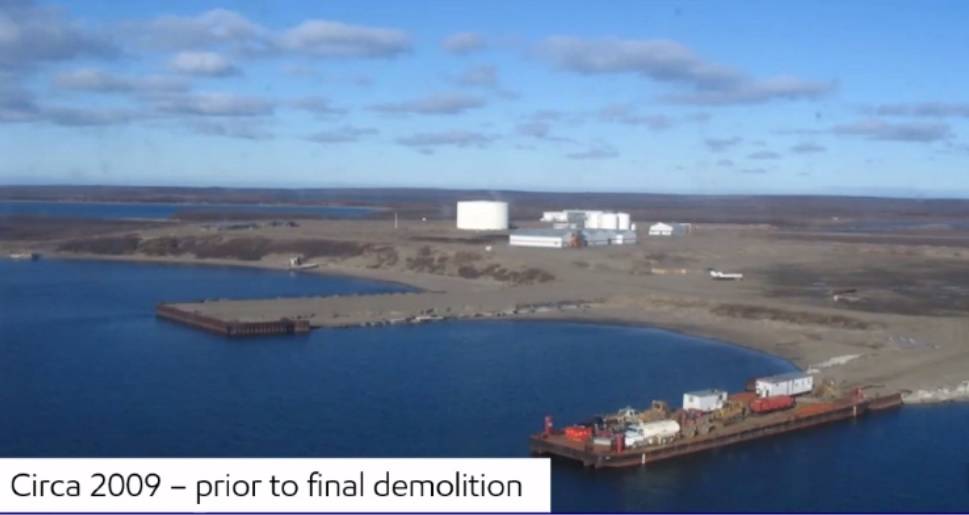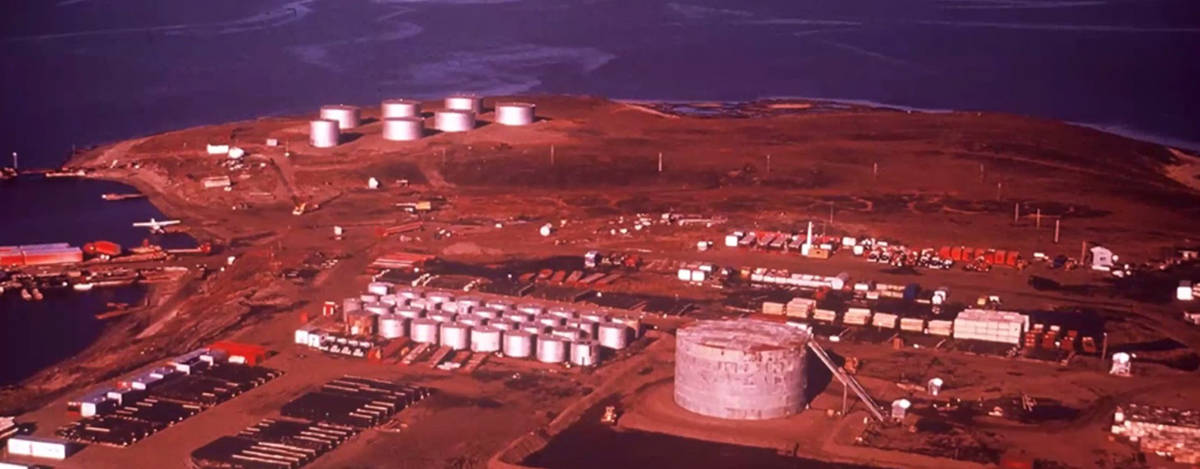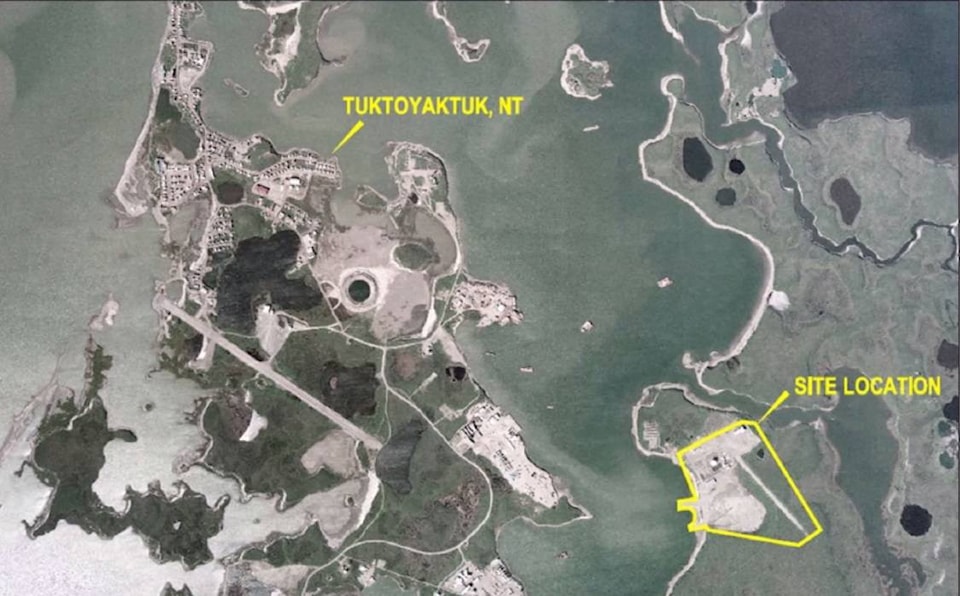Restoring Tuk Island to its natural state is coming along, despite finding more contamination than initially expected.
Appearing remotely, Imperial Oil gave a presentation on the Tuk Base remediation and closure project April 15 in Aklavik, as well as work on Tununuk Point.
“In the mid 1980s our site activity ceased” said project manager Benjamin Fraser. “By 2001 we began environmental assessments on site. The driver for that work was really to understand where the impacts were located on site. When we have storage tanks and vessels and lots of activity happening, some environmental impacts certainly occurred. Through our assessment programs we were able to identify and map out all the locations that would require remediation activities.
“The end goal at the end of the day is to remediate the site and then return it back to beneficial use.”

Lease nears end-date
Initially used as a storage and staging area for further oil drilling further offshore in the Beaufort Sea in the 1970s and 80s, the base was closed down as the oil boom fizzled out. However, the drillers left a big footprint in the form of contaminated soil, old structures, buried contaminants and other environmental and safety hazards. Tuk Island is located roughly two kilometres southeast of the hamlet.
With their lease on the Inuvialuit land wrapping up in 2024, Imperial Oil, also known as Esso, is racing to return the island to as close to its original state as possible. Clean-up work has been ongoing since 2019 with Esso’s main subcontractor, Golder Associates. Recent work on the site has consisted of winter and summer seasons, using the thick ice to haul debris out in the winter and preparing the site for excavation in the summer.
Brian Suen of Golder explained that work in 2020 consisted of removing contaminated debris from the site over the wintertime. Bags of soil were shipped to Fort Nelson, B.C. for disposal while landfill debris was taken to the Inuvik landfill, where the town gave a special one-time tipping fee discount to EGT-Northwind, which had the contract to haul material to the landfill.
Concrete slabs from the site are being repurposed for shoreline preservation as climate change erodes the Arctic coastline out from under the hamlet. Over the summer, the landfill was excavated further and debris was sorted according to its level of contamination. Following excavation, pits are backfilled with clean soil treated at an onsite Soil Treatment Cell.
Fraser noted the soil contaminated with hydrocarbons and diesel can be treated on site. Soil with dissolved metals will need to be hauled southwards to be disposed of.
More contaminants than expected
Over the 2021 winter, work consisted of further removal of contaminated material from the site. One of the two docks on the island is being repaired and will stay in service after Esso leaves, while the other will be removed over the summer. Other work planned this summer include decommissioning a sewage lagoon tied to the work camp, breaking concrete slabs down to smaller sections for coastline preservation and further work on excavating contaminated soil and refilling it with clean soil.
Work was initially expected to be completed in 2022, but after workers discovered more contaminated material on site, the scope of the project has expanded to 2024.

“As we were excavating the south landfill we encountered increased volumes (of contaminated material,)” explained Fraser. “We all of a sudden had a void of clean material on site to fill in these holes. So what we did was imported around 6,000 cubes of clean material from a nearby quarry that EGT had a quarry permits with. This quarry was actually used as one of the quarries for gravel material helping construct the Inuvik-Tuktoyaktuk highway, so we’ve piggybacked off that permit and brought clean fill.
“We had a lot of haul trucks running back and forth from the quarry to our site. What we have now is a large stockpile of clean material that will help us continue to progress our remedial excavations this summer and back filling in with the clean material.”
Prior to beginning remediation work in 2019, the site has been subject to periodic activity since Esso ceased operations in the 1980s. The bulk of equipment was removed in the 90s and the initial environmental assessment was completed in 2001. Efforts to remove drilling muds, chemicals and other debris began in 2007. Major infrastructure, including the tank farm, the buildings, pipes and pipelines, pilings and sleighs, were barged to Inuvik and then trucked to landfills in B.C. and Alberta in 2011.
Fraser also noted work was being done on Tununuk Point as part of post-remedial monitoring. In particular, a series of pilings from an old dock have so far stymied removal efforts and another attempt will be done this summer. In the interim, the Coast Guard has installed buoys around the hazards to prevent any collisions with boats.
Part of Esso’s deal with the Inuvialuit Land Authority is to continue to monitor permafrost and water quality at the site.
